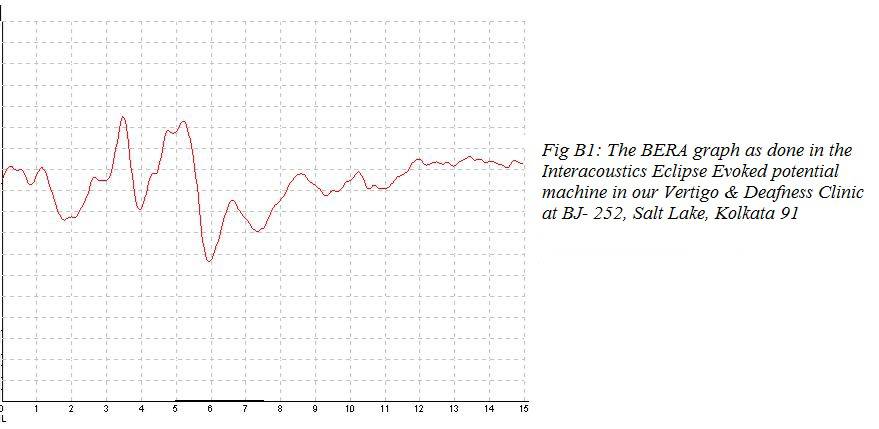Brain Stem Evoked Response Audiometry (BERA)
The Brain Stem Evoked Response Audiometry (BERA) is an objective test that gives us the approximate average hearing threshold level of the subject. It is a very reliable but time consuming test to objectively evaluate the hearing threshold of an adult or child across all frequencies except for the low frequencies.The term objective signifies that the patient does not have to subjectively respond to the sound stimuli and convey whether the patient is hearing the sound or not which is required in most hearing tests. The BERA test can autometically detect the patients hearing threshold i.e., how much the patient is hearing and is hence very useful to detect the hearing status in small children and in difficult to test adults. It is usually done using a click sound by which the subject’s average hearing threshold across all frequencies is evaluated.The BERA test is also done to identify the site of lesion i.e., the anatomical region in the brain where there is a damage in the auditory pathway inside the brain in patients suffering from vertigo / deafness / tinnitus. In Vertigo and Deafness clinic, in addition to click evoked BERA, there are provisions of carrying out Tone Evoked BERA i.e., BERA test with pure tone sounds to objectively evaluate hearing thresholds at different frequencies and also Bone Conduction BERA. CHIRP BERA which is a very sophisticated form of BERA test is also possible in Vertigo and Deafness Clinic. The clinc has six separate BERA units two from RMS one from Labat, one from Interacoustics and two from Otometrics.
The Brainstem Evoked Response Audiometry (BERA)Test: – also called the ABR test or the BSER test is an objective test of hearing that is traditionally used for testing the structural and functional integrity of the auditory pathway from the inner ear to the midbrain. Many neurotological disorders that present with vertigo or deafness have defects in this portion of the auditory pathway in the brain. This is hence one of the basic investigations in patients suffering from vertigo, imbalance, hearing deficit and tinnitus. The test is also used to determine the degree of hearing loss objectivity in pediatric patients as well as in difficult to test patients who do not respond reliably to the subjective tests of hearing like the pure tone audiometry and allied tests.

In medical parlance this test is an auditory evoked potential test. When a auditory stimulus (sound) is presented to the ear, an electrical potential is evoked in the cochlea in response to the sound stimulus and this electrical output called ‘action potential’ traverses through the auditory pathway to reach the higher areas in the brain where it is processed and the meaning pertaining to the sound interpreted. The BERA test monitors and records the smooth passage of the electrical impulse through a major part of the brain. In disorders of the brain involving the auditory pathway, the smoothness of the passage of this electrical impulse gets affected and this abnormality can be picked up by the BERA test. The response is identified by peaks (also called waves) that occur typically between one and ten millisecs from the onset of the sound stimulus. The BERA peaks are measured and marked traditionally as waves one, two, three, four, and five; each wave has an expected latency (time in millisecs between the presentation of the sound and the occurrence of the wave peak) which is considered as normal and any increase of the latency or absence of any of the wave / peaks indicates an abnormality in the auditory track i.e., the nerves (neural pathways) that transmit the electrical potential in the brain. By analyzing the morphology of the BERA graph and by measuring different parameters of the wave peaks in the graph (as shown in Fig B1), clinicians with sufficient knowledge and insight on the intricacies of BERA can identify disorders in the portion of the brain through which the auditory track passes as it traverses from the ear to a portion high up in the brain called the midbrain. Since a big portion of the neural pathway that connects the balance organ situated deep inside the ear to the higher levels in the brain also traverses along the same pathway as the auditory pathway, BERA though primarily a test of the hearing system, is a very important test for patients suffering from balance disorders like vertigo / imbalance.

